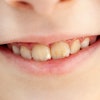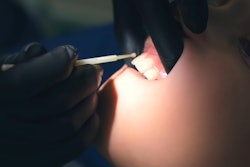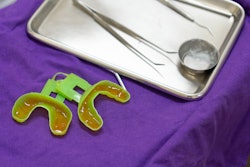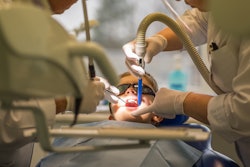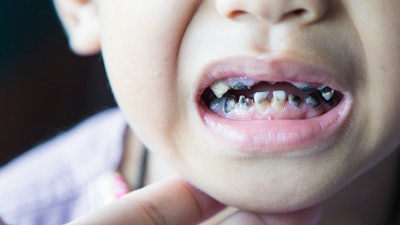
The global incidence rate of caries in permanent teeth among school-aged children remained stable at a high level from 1990 to 2019, according to research recently published in the Journal of the American Dental Association.
However, an increasing trend was observed in nearly half of the sociodemographic index (SDI) or Global Burden of Diseases, Injuries, and Risk Factors Study (GBD) regions and more than half of the world's countries and territories, the authors wrote.
"These findings suggest that caries in permanent teeth is a priority health issue in school-aged children worldwide," wrote the authors, led by Dr. Gang Huang of Capital Medical University in China (JADA, July 1, 2024).
The unfavorable trends in caries incidence rates in children ages 5 to 14 are likely due to a combination of factors. These include excessive sugar consumption, poor oral hygiene, insufficient fluoride exposure, low family income, and inadequate access to primary oral health care, they wrote.
The GBD study estimated the incidence of nonfatal diseases by cause, age, sex, location, and year using a regression modeling tool. The GBD estimates cover 204 countries and territories, categorized into five SDI regions and 21 geographic regions.
Huang and colleagues used GBD data to analyze annual cases and the incidence rates of caries in permanent teeth in children ages 5 to 14 from 1990 to 2019. The study calculated relative changes in incident cases over time and used joinpoint regression to analyze trends in incidence rates.
Globally, incident cases of caries in the permanent teeth of children ages 5 to 14 increased by about 15% from 1990 to 2019, while the incidence rate remained stable at around 34%. In both 1990 and 2019, children ages 10 to 14 had higher incident cases and incidence rates of caries in permanent teeth compared to children ages 5 to 9, according to the results.
The incidence rate for children ages 5 to 9 decreased from 24.41% in 1990 to 23.56% in 2019, with an average annual decrease of 0.13%. For children ages 10 to 14, the incidence rate remained stable at around 44.5% throughout the study period. However, from 2017 to 2019, there was an increase in the incidence rate for this older age group at an annual percentage change of 0.26%.
Furthermore, nearly half of the GBD regions and over half of the world's countries showed an increasing trend in caries incidence during this period. Furthermore, there was an annual increase of 0.08% in low SDI regions and 0.07% in low-middle SDI regions, according to the study.
However, the study had limitations. Some incidence values for caries in permanent teeth were estimated rather than directly measured in the GBD, which may affect their accuracy, the authors wrote.
"Reducing free sugar intake and implementing school-based effective caries prevention programs, such as school water fluoridation, provision of fluoride tablets at school, and school dental sealant programs, are needed for school-aged children," Huang et al concluded.




